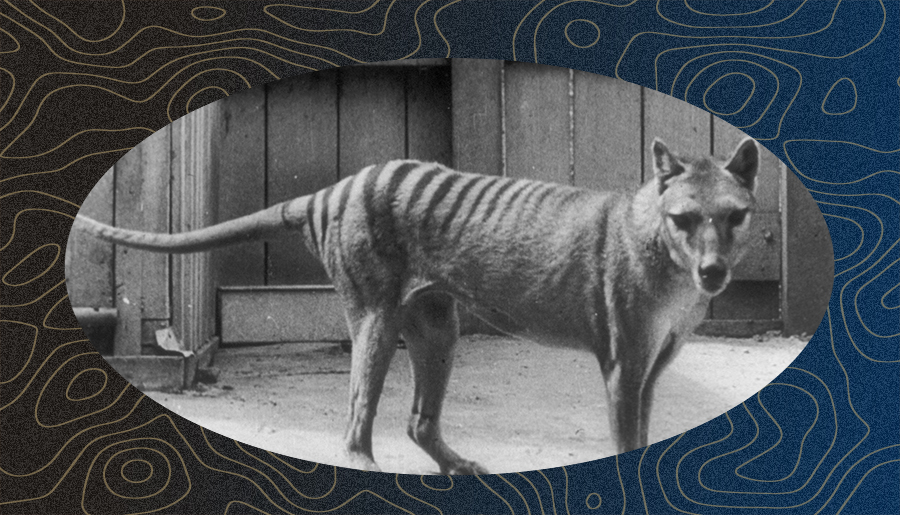A bioscientist resurrecting a Tasmanian tiger, otherwise known as a thylacine, sounds like the start of a trashy monster movie. However, this is exactly what the University of Melbourne plans to do, thanks to a $5 million philanthropic gift.
This splash of cash will be used to create the Thylacine Integrated Genetic Restoration Research (TIGRR) Lab. “The funding will allow our lab to move forward and focus on three key areas,” explained the lab’s leader, Professor Andrew Pask. “Improving our understanding of the thylacine genome; developing techniques to use marsupial stem cells to make an embryo; and then successfully transferring the embryo into a host surrogate uterus, such as a dunnart or Tasmanian devil.”
According to the National Museum of Australia, the last known thylacine died of exposure in Hobart during 1936. This species became extinct because of hunting, their habitats being destroyed, and introduced diseases.
“Of all the species proposed for de-extinction, the thylacine has arguably the most compelling case,” claimed Pask. “The Tasmanian habitat has remained largely unchanged, providing the perfect environment to re-introduce the thylacine and it is very likely its reintroduction would be beneficial for the whole ecosystem.”
However, to quote Jeff Goldblum’s character in Jurassic Park, Ian Malcolm, “Your scientists were so preoccupied with whether or not they could, they didn’t stop to think if they should.”
Related: Seven Life-Shaking Megatrends Predicted by Science
Related: The Largest Dinosaur to Exist In Australia Has Been Discovered In Queensland
Could This $5 Million Be Better Spent Elsewhere?
The folks over at TIGRR are making a huge deal out of the fact that their funding won’t just help resurrect the thylacine. As Pask stated, “The tools and methods that will be developed in the TIGRR Hub will have immediate conservation benefits for marsupials and provide a means to protect diversity and protect against the loss of species that are threatened or endangered.”
What’s more, Pask also asserted, “While our ultimate goal is to bring back the thylacine, we will immediately apply our advances to conservation science, particularly our work with stem cells, gene editing and surrogacy, to assist with breeding programs to prevent other marsupials from suffering the same fate as the Tassie tiger.”
Now, don’t get me wrong, it’s rad that this research will have practical applications for Australia’s endangered marsupials. It’s truly heartbreaking that The Nature Conservancy has listed the likes of the numbat and the Mountain Pygmy-possum as animals that could disappear forever. Therefore, any stem cell research or gene editing research that could help Australia’s marsupials out is more than welcome.
However, the fact that this situation is so dire for so many of our critters begs the question: Shouldn’t every last cent of this $5 million be used to help them? Seriously, this money could be used so much more effectively. Marsupials are being wiped out here and now. If these researchers changed their long-term priorities, who knows how many endangered species they could help.
Is It Ethical to Resurrect Animals?
Stanford Law’s Professor Hank Greely has stated it would be potentially unethical and dangerous to bring back species from the grave. This is because it might carry diseases or actually hurt the ecosystems that they’re introduced into. “It’s a little odd to consider these things ‘alien’ species because they were here before we were,” expressed Greely. “But the ‘here’ they were in is very different than it is now. They could turn out to be pests in this new environment.”
Read more stories from The Latch and subscribe to our email newsletter.







